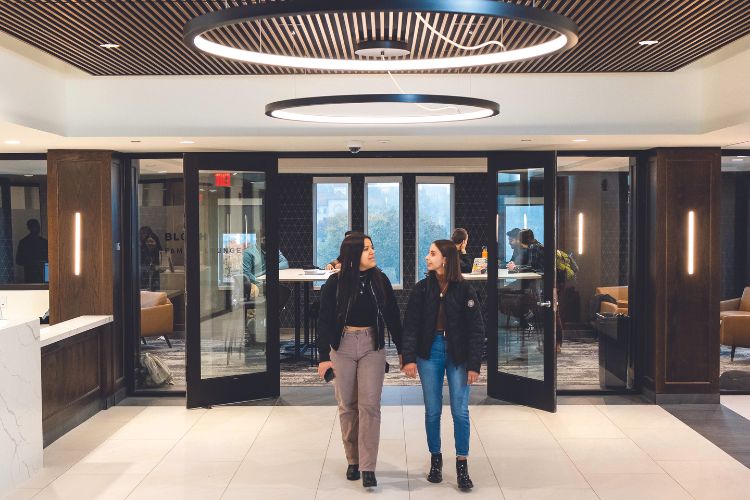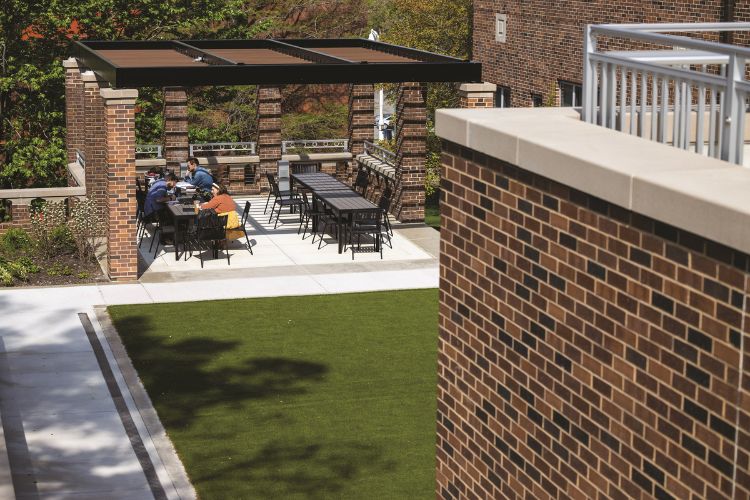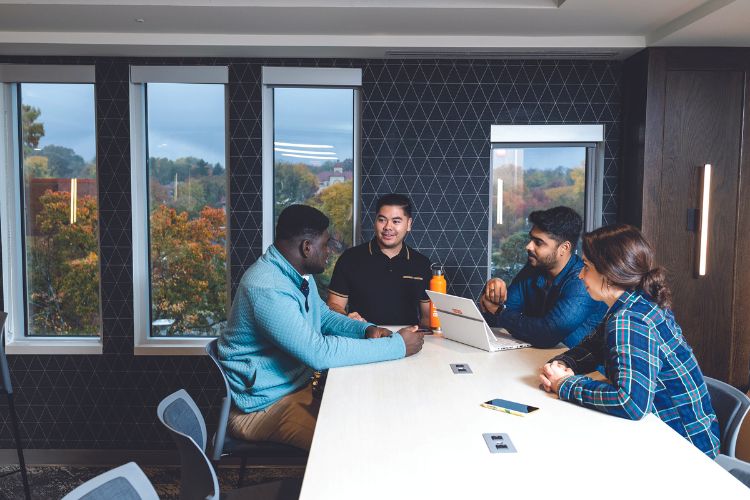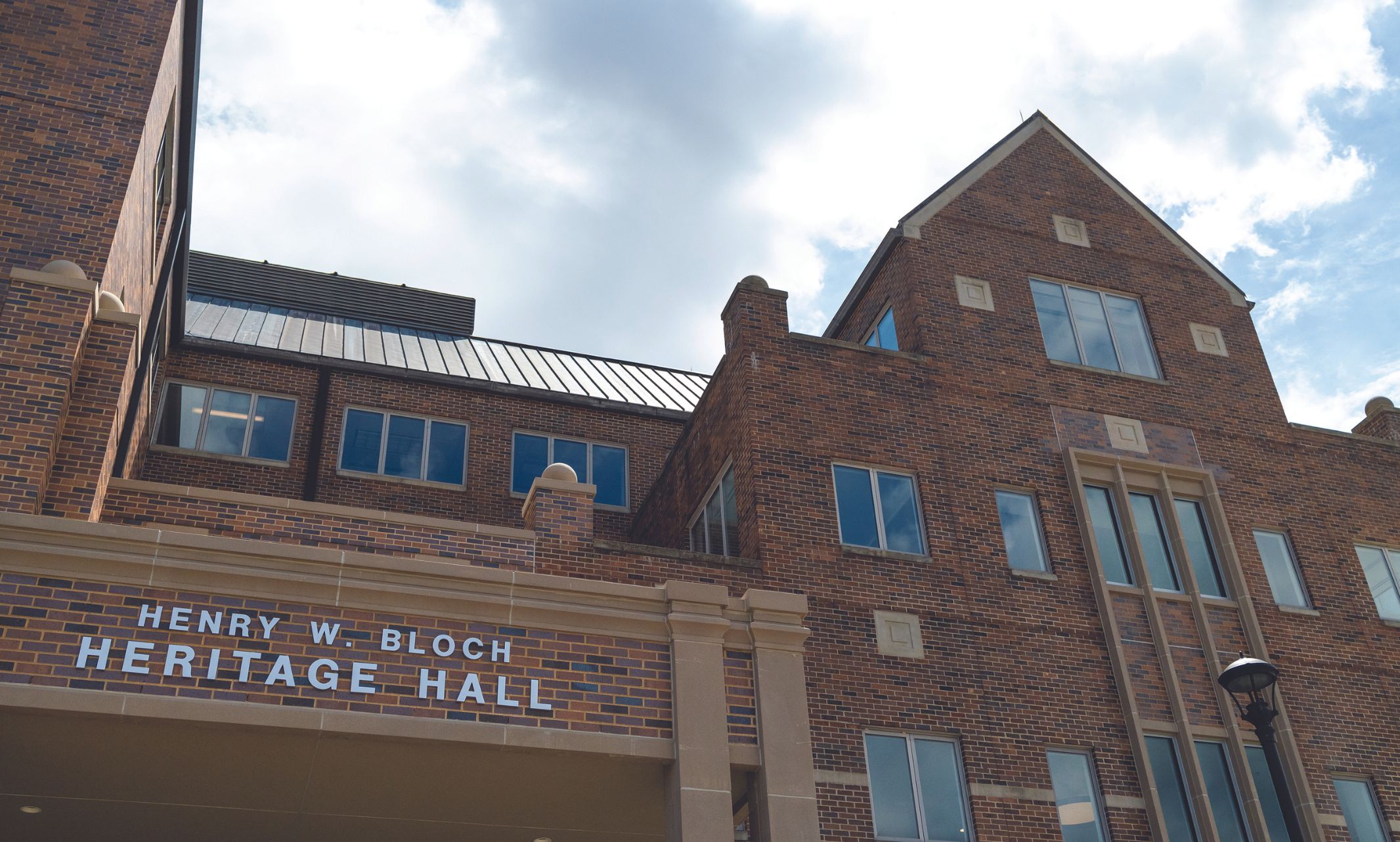Last summer’s grand reopening of Bloch Heritage Hall marked a two-fold celebration, remembering Henry W. Bloch on what would have been his 100th birthday and the revitalization of a campus cornerstone. Alumni, students, university leadership, city officials, donors and members of the Bloch family all gathered for the celebration and ribbon cutting.
But now that the party is over, it’s back to class.
Bloch Heritage Hall is an amalgamation of the historic Shields Mansion, an estate built in the early years of the 20th century for grain magnate Edwin W. Shields and his wife, Martha, and a sprawling addition the university completed in 1986 with a $1 million contribution from Henry Bloch himself. With the opening of Bloch Executive Hall in 2013, Heritage Hall’s $17 million upgrade was necessary to keep up to date with the evolving school.
“The recent renovation of Bloch Heritage Hall has been a game changer, not only for our students, but for our faculty and staff as well,” says Scott Ezzell, manager of undergraduate admissions and recruitment. “Students now have a variety of indoor and outdoor spaces in Heritage Hall available to use for individual study, group collaboration or simply just to relax and socialize between classes. More students stick around between classes than ever before, and there’s a distinct energy throughout the building that wasn’t as noticeable before the renovation.”

As part of the project, the Marion H. Bloch Terrace and Park also went through a transformational beautification and enhancement, providing outstanding space for students, faculty and staff to gather and collaborate. It has also been, and will continue to be, the site for many events at the school, helping to build connections and community.
The multi-year project sought to maintain the aesthetics of the building’s historic exterior, while moving dated sections of the building’s interior into the 21st century with new offices, gathering spaces and classrooms entwined with modern technology that fosters flexible learning environments for students.
Only accelerated by the COVID-19 pandemic, the need for remote learning options has grown in recent years, as more students demand hybrid learning models to balance classwork with outside obligations. Each classroom touched by the renovation now includes such amenities as video screens, cameras and microphones, allowing access to lessons and lectures from virtually anywhere.
“The new designs and renovations make it easy for students to collaborate and work together in class to solve problems,” says Brian Klaas, dean of the Bloch School. “They give students new options for how to engage, with some joining in-person and others opting to participate virtually.”

The renovation not only improves technology but also centralizes previously hard-to-find resources into a single student services hub. From the building’s main entrance, students can now directly access valuable assets, including undergraduate advising, the career center, recruiting, tutoring and student organizations.
Designed by PGAV Architects, the hub was created by filling in two floors of an atrium — the centerpiece of the 1986 addition. Newly created floor space on the first floor created an open common area where students can mingle and meet.
“In addition to the renewed energy, students, faculty and staff are now even more accessible as a result of the new Bloch Student Services Hub. Students can now just come to the hub’s front desk to find help with anything they need,” Ezzell added. “It could be a prospective student wanting to learn more about Bloch and our programs, a current student needing class or career advice or someone wanting to visit their professor during their office hours. With most of Bloch’s faculty and services offices centrally located, we’re able to serve our students and collaborate with one another more efficiently and effectively.”

